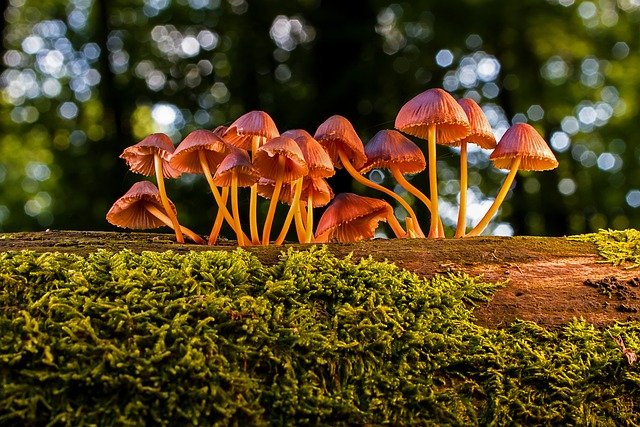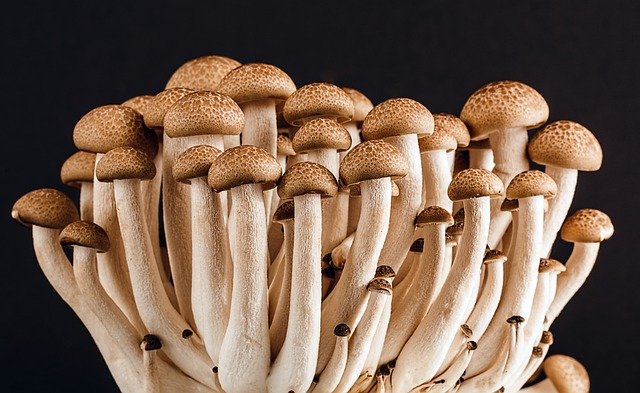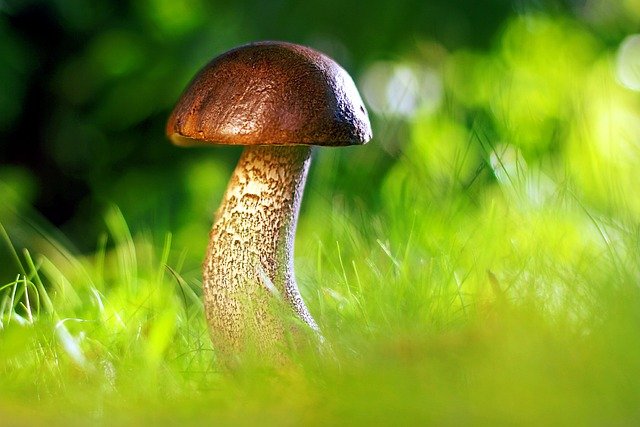In this content guide, you will learn about the safety aspects of edible mushroom identification. We will provide you with a comprehensive guide on how to identify edible mushrooms, along with valuable information about dangerous mushroom varieties found in the USA. Our aim is to help you become more confident and knowledgeable when foraging for mushrooms, ensuring that you choose safe and delicious options to enjoy.
We understand the importance of mushroom safety, which is why this content guide is designed to support the main pillar page on “Mushroom Safety and Identification.” By providing you with essential tips and knowledge, we hope to enhance your mushroom foraging experience and enable you to make informed decisions when it comes to selecting edible mushrooms. So, let’s delve into the world of edible mushroom identification and equip ourselves with the knowledge needed to safely enjoy the wonders of nature’s bounty!
Guide to Edible Mushroom Identification

Introduction
Mushrooms are fascinating organisms that come in a variety of shapes, colors, and sizes. While some mushrooms are known for their culinary value and health benefits, others can be highly toxic and pose serious health risks if consumed. As a mushroom forager, it is crucial to accurately identify edible mushrooms to ensure a safe and enjoyable experience. In this guide, we will explore the importance of mushroom identification, common edible mushroom species, physical characteristics of edible mushrooms, tips for identifying them in the wild, cautionary tips for mushroom foraging, dangerous mushroom varieties in the USA, signs and symptoms of mushroom poisoning, and when to seek professional assistance.
Importance of Mushroom Identification
Understanding the risks of misidentification
Being able to accurately identify edible mushrooms is essential to avoid the dangers associated with misidentification. Some wild mushrooms closely resemble their edible counterparts, but can have toxic or even deadly effects if eaten. Misidentifying mushrooms can lead to severe illness, organ damage, or even death. Therefore, it is absolutely crucial to be able to distinguish between edible and poisonous varieties.
Health benefits of consuming edible mushrooms
On the other hand, consuming edible mushrooms can provide numerous health benefits. They are low in calories, yet rich in vitamins, minerals, and antioxidants. Edible mushrooms are known to boost the immune system, improve digestion, lower cholesterol levels, and support brain health. By correctly identifying and consuming edible mushrooms, you can not only enjoy their delicious flavors but also reap their health benefits.

Common Edible Mushroom Species
There are several common edible mushroom species that are widely consumed and cultivated. Let’s take a closer look at four of them:
Agaricus bisporus
Agaricus bisporus, also known as the button mushroom or white mushroom, is one of the most common and widely cultivated mushroom species. It has a mild flavor and a firm texture, making it a versatile ingredient in various dishes. Button mushrooms are typically white or light brown in color and have a rounded cap shape.
Pleurotus ostreatus
Pleurotus ostreatus, commonly referred to as oyster mushroom, is another popular edible mushroom. It has a delicate, slightly sweet flavor and a distinctive oyster-like shape. Oyster mushrooms come in various colors, including white, cream, gray, and brown. They are often used in stir-fries, soups, and risottos.
Lentinula edodes
Lentinula edodes, more commonly known as shiitake mushroom, is highly valued for its rich umami flavor. It has a meaty texture and a dark brown cap with a slightly curled edge. Shiitake mushrooms are frequently used in Asian cuisine and can be enjoyed in soups, stir-fries, and sauces.
Cantharellus cibarius
Cantharellus cibarius, or chanterelle mushroom, is prized for its fruity and peppery aroma. It has a vibrant yellow to orange color, a funnel-shaped cap, and a ridged or wrinkled surface. Chanterelle mushrooms are known for their delicate texture and are often sautéed or used in pasta dishes.
Physical Characteristics of Edible Mushrooms
When it comes to identifying edible mushrooms, paying attention to their physical characteristics is crucial. Here are some key aspects to consider:
Color
Mushrooms come in a wide range of colors, including white, brown, yellow, orange, and even purple. The color of a mushroom’s cap, gills, stem, and spores can provide important clues for identification. It is essential to refer to reliable field guides or mushroom identification apps to determine the color characteristics of different edible mushrooms.
Shape
Mushrooms exhibit various shapes, such as round, oval, flat, bell-shaped, or even irregular. The shape of a mushroom’s cap and stem can help narrow down the possibilities during identification. For example, button mushrooms have a rounded cap, while oyster mushrooms have a distinct oyster-like shape.
Size
Size can also be a useful characteristic when identifying mushrooms. Edible mushrooms can range from small, like button mushrooms, to large, like shiitake mushrooms. However, it is crucial to note that size alone is not enough to determine the edibility of a mushroom.
Texture
The texture of a mushroom’s cap and stem can vary significantly among different species. Some mushrooms have a smooth and firm texture, while others may be slimy or fibrous. Understanding these textural differences can help differentiate between edible and poisonous mushrooms.

Identifying Edible Mushrooms in the Wild
While the physical characteristics mentioned above provide a foundation for mushroom identification, additional methods can be employed to ensure accuracy. Here are some tips for identifying edible mushrooms in the wild:
Using field guides and apps
Field guides and mushroom identification apps are valuable tools when it comes to mushroom identification. These resources provide detailed descriptions, photographs, and identification keys, which can help you compare the physical characteristics of mushrooms you find in the wild with known edible species.
Examining spore color
The color of a mushroom’s spores can be a defining characteristic for identification. Spore color can range from white to black, with various shades in between. Collecting spore prints by placing a mushroom cap on a piece of paper or glass overnight can help determine the spore color, which can further aid in identification.
Analyzing habitat and location
Different mushroom species have specific habitat preferences. Some mushrooms thrive in forests, while others are more commonly found in grassy areas or near trees. Understanding the environment in which a mushroom grows can provide valuable information during identification. Additionally, noting the geographic location and time of year can narrow down the possibilities of edible species.
Cautionary Tips for Mushroom Foraging
While mushroom foraging can be a rewarding and enjoyable experience, it is essential to proceed with caution. Here are some cautionary tips to keep in mind:
Avoiding poisonous look-alike species
Some mushrooms closely resemble edible varieties, but can be highly toxic. It is crucial to be aware of the common look-alike species and thoroughly familiarize yourself with the distinguishing characteristics of edible mushrooms. Examples of poisonous look-alike species include the deadly Amanita phalloides, which resembles edible varieties of Amanita mushrooms.
Be cautious with unfamiliar mushrooms
If you come across a mushroom species that you are unfamiliar with or cannot confidently identify, it is best to err on the side of caution and avoid consuming it. Even experienced foragers can encounter mushrooms that are difficult to identify, so it is important to prioritize safety.

Toxic and Dangerous Mushroom Varieties
While there are many safe and edible mushrooms, it is crucial to be aware of the dangerous varieties that can cause serious harm. Here are a few toxic and dangerous mushroom species in the USA:
Amanita phalloides
Also known as the death cap mushroom, Amanita phalloides is one of the deadliest mushrooms in the world. It contains potent toxins that can cause severe liver and kidney damage and can be fatal if ingested.
Galerina marginata
Galerina marginata, commonly referred to as the deadly galerina or autumn skullcap, contains toxins similar to those found in the death cap mushroom. Consuming this mushroom can result in severe liver damage and potentially be fatal.
Gyromitra esculenta
Gyromitra esculenta, or the false morel, is another highly toxic mushroom. It contains a compound called gyromitrin, which can cause severe gastrointestinal distress and potentially lead to organ failure.
Clitocybe dealbata
Clitocybe dealbata, also known as the fool’s funnel, can be mistaken for edible chanterelle mushrooms. However, it contains toxins that can cause severe gastrointestinal symptoms, such as vomiting and diarrhea.
Signs and Symptoms of Mushroom Poisoning
In case of accidental consumption of poisonous mushrooms, it is essential to recognize the signs and symptoms of mushroom poisoning. The symptoms can vary depending on the type and amount of toxins ingested. Here are some common signs and symptoms:
Gastrointestinal symptoms
Many cases of mushroom poisoning initially present with gastrointestinal symptoms, including nausea, vomiting, abdominal pain, and diarrhea. These symptoms can appear within hours after ingestion and may help identify potential toxicity.
Neurological symptoms
Certain poisonous mushrooms can also affect the nervous system, leading to symptoms such as dizziness, confusion, hallucinations, seizures, and even coma. Neurological symptoms typically occur in more severe cases of mushroom poisoning.
Liver damage
Some toxic mushrooms, like Amanita phalloides, can cause acute liver failure. Symptoms of liver damage may include jaundice (yellowing of the skin and eyes), dark urine, and pale stools. If left untreated, liver failure can be life-threatening.
Kidney failure
Ingesting certain toxic mushrooms can result in kidney damage, potentially leading to acute kidney failure. Symptoms may include decreased urine output, swelling in the legs and ankles, and fatigue.

Seeking Professional Assistance
In the event of mushroom poisoning or uncertainty about the toxicity of a mushroom, it is crucial to seek professional assistance. Here are two avenues to consider:
Consulting with an expert mycologist
Mycologists are scientists who specialize in studying fungi, including mushrooms. Consulting with an expert mycologist can help you determine the edibility of a mushroom or provide guidance in case of accidental consumption. They can assess photographs, spore prints, or physical samples to aid in identification.
Contacting a poison control center
If you or someone you know has ingested a potentially toxic mushroom, contact a poison control center immediately. Poison control centers have medical professionals available who can provide guidance and determine the necessary steps to ensure your safety.
Conclusion
Mushroom foraging can be a rewarding and exhilarating experience, but it is essential to prioritize safety and accurately identify edible mushrooms. By understanding the importance of mushroom identification, familiarizing yourself with common edible mushroom species, considering the physical characteristics of mushrooms, and following cautionary tips, you can reduce the risks associated with mushroom foraging. In case of uncertainty or accidental consumption of toxic mushrooms, seeking professional assistance is key. Remember, a guide to edible mushroom identification is an essential tool to ensure a safe and enjoyable mushroom foraging experience. Happy foraging!


